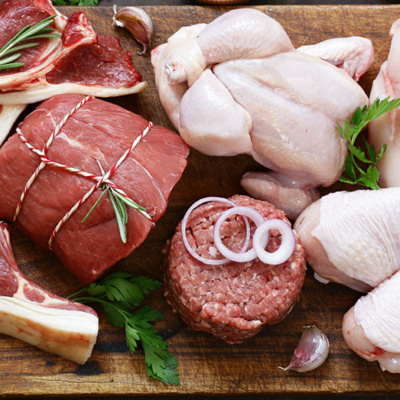top of mind news
- New Restaurant Concepts Coming in 2021
- Life After Coronavirus: 4 Ways Restaurants Can Prepare
- Time To Bring Back Staff: Restaurant Rehiring And Training
- President-elect Joe Biden Unveils $20 Billion National Vaccine Distribution Plan
- The New Restaurant Model: Walk-up Windows And Drive-thrus
Poultry
 Chicken slaughter for the week ending January 9th, at 169.8 million head, was down 2% from the year prior but was three million head larger than the average of the six-prior non-holiday weeks. Given sharply higher feed costs that have more than outpaced any recent gains on chicken prices, producers are not likely to increase production in the near-term. The leg quarter index has been firming, breaking the $0.25 mark that has served as significant resistance since mid-2020. Further upside potential for leg quarters is likely into the spring. Wing prices remain inflated as active foodservice sales continue to support the complex, but retail appears to be backing off from typically feature activity. Barring additional broiler production, wing prices may remain firm.
Chicken slaughter for the week ending January 9th, at 169.8 million head, was down 2% from the year prior but was three million head larger than the average of the six-prior non-holiday weeks. Given sharply higher feed costs that have more than outpaced any recent gains on chicken prices, producers are not likely to increase production in the near-term. The leg quarter index has been firming, breaking the $0.25 mark that has served as significant resistance since mid-2020. Further upside potential for leg quarters is likely into the spring. Wing prices remain inflated as active foodservice sales continue to support the complex, but retail appears to be backing off from typically feature activity. Barring additional broiler production, wing prices may remain firm.
Beef
Last week’s cattle harvest was steady with the prior week but jumped 2.1% over a year ago. Heavier carcasses boosted beef output 4.3% over the year prior. The USDA cutouts were firm amid larger output, with the chuck and loin primals leading the upside. Also contributing to the increases were the beef 50s which moved into the mid-$0.40s throughout the week. And further upside is projected. Domestic 90s edged into the $2.16 area and look to continue higher – most of which is seasonally normal as cow harvests fade. Imported lean beef prices remain mostly steady, but smaller imports from Australia are likely to be supportive.
Pork
Pork production last week fell sharply, down near 7% (w/w), but was still 6.7% larger than a year ago. The individual pork items were widely choppy, with the hams up sharply while the belly primal fell modestly. While the bellies were lower last week, seasonal strength is expected into late January before prices ease into late winter. Pork 42s prices are mostly in line with seasonal expectations, but a slow uptrend is likely into mid-spring. The 72s prices remain inflated as it appears further processing lines are slow but prices should fade into the spring.
THE SEA
Seafood
The snow crab markets continue to trade at extremely inflated price levels. U.S. snow crab imports were solid during the fall however buyers had to pay up to do so. World snow crab supplies remain tight. The Alaskan Bering Sea snow crab fishing season is picking up which is typical after the holidays. However, expensive snow crab prices are likely to persist in the nearing weeks.
THE GARDEN
Produce
The Idaho potato markets continue to track well below the previous year levels. Stocks are adequate due in part to relatively lackluster demand. History suggests that the risk in the potato markets is to the upside as holdings declining in the coming months. The five-year average move for the 70-count Idaho potato market during the next ten weeks is an increase of 13.7%. The tomato markets remain fairly inflated due in a large part to cool weather in Florida. However, better supplies from Mexico are starting to weigh heavy on prices.
THE KITCHEN SINK
Dairy
CME cheese block and barrel prices finished modestly higher last week. Per the USDA, November cheese production was up .5% (y/y) but was down 2.7% (m/m). The cheese markets may experience some weakening in the near-term, but the downside potential may be limited due in part to solid exports. CME spot butter prices were down again last week and are the lowest since May. Domestic butter manufacturing during November was up 4% (y/y) and was 1.8% stronger (m/m). Current butter prices are engaging. The spot butter market hasn’t spent a notable period of time below $1.300/lb. since 2009.
Grains
The wheat markets are on the rise again following the lead of corn and soybeans. The USDA is projecting domestic winter wheat seedings this year to rise 5% from last year but remain historically small. Further, domestic winter wheat crop conditions are less than ideal. Erratic wheat prices could persist.
Oil
Last week nearby natural gas futures closed higher (w/w) and are up 43.1% (y/y). As of January 8th, total U.S. natural gas stocks were up 4.1% (y/y). Cold temperatures are forecasted in the next two weeks which can support natural gas prices.













